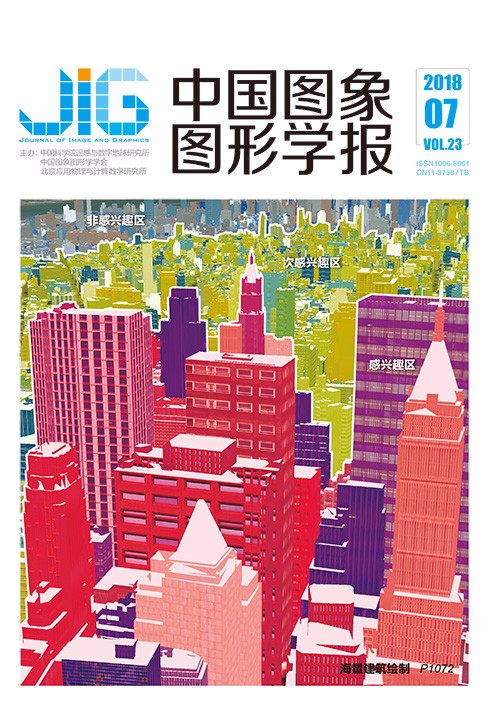
分组渐进迭代逼近算法拟合数据点集
摘 要
目的 在计算机辅助设计领域里,曲线或曲面的渐进迭代逼近(PIA)性质在插值与拟合问题中有着广泛的应用。如果直接使用PIA方法对所有的数据点集进行拟合,那么在拟合大规模数据点时就缺少一定的灵活性。为了进一步提高渐进迭代逼近方法在拟合大规模点集时的灵活性,提出基于分组的渐进迭代逼近方法。方法 首先对待拟合点集进行分组;其次对分组后的点集采用PIA方法或是基于最小二乘的渐进迭代逼近方法(LSPIA)来得到一组插值或拟合精度不断改善的曲线/曲面;最后运用曲线/曲面拼接算法保证曲线/曲面的连续性,得到1条/张插值或拟合于给定点集的曲线/曲面。结果 给定相同的数据点集,分别采用分组PIA方法,PIA方法和LSPIA方法进行拟合。分组PIA方法与PIA方法相比误差减少的倍数与组数相当;分组PIA方法与LSPIA方法相比误差减少一半。结论 本文将分组思想引入渐进迭代逼近方法之中,提出了基于分组的渐进迭代逼近方法。该分组算法适用于拟合大规模数据点集,在拟合过程中,可以提高渐进迭代逼近方法在拟合大规模点集时的灵活性;经过理论推导证明了曲线/曲面的迭代效率有所提高,且与PIA方法相比误差有较大的改善。
关键词
Grouped progressive iterative approximation method of data fitting
Zheng Guo1, Zhang Li1, Zhang Shijie1, Du Zhuangping1, Liu Yi2, Tan Jieqing1,2(1.School of Mathematics, Hefei University of Technology, Hefei 230009, China;2.School of Computer and Information, Hefei University of Technology, Hefei 230009, China) Abstract
Objective The progressive iterative approximation (PIA) method has a wide range of applications for solving interpolation and fitting problems in computer-aided design. The PIA format presents an intuitive way of data fitting by adjusting the control points iteratively. This method format generates a sequence of curves/surfaces with fine precision. According to the PIA property, the limit of the curve/surface sequence interpolates the initial data points if the blending basis is normalized and totally positive and its corresponding collocation matrix is nonsingular. To increase the flexibility of the PIA method in the large-scale fitting of data points, a new PIA method, which is based on grouping, is proposed in this work.Method First, the initial data points to be fitted are divided into several groups. Second, by applying the PIA or LSPIA method on these grouped data points separately, we can obtain a sequence of curves/surfaces with the PIA property for each group of data. Then, by adjusting the control points on the boundary according to the continuity conditions, a blending algorithm is implemented on these separate curves/surfaces. Thus, we finally acquire one whole curve/surface piece and ensure its continuity. Moreover, by grouping the data points, we can reduce the computation and improve the iteration efficiency.Result We use the PIA, LSPIA, and proposed methods on a single data set to fit data points. The grouped PIA method is convergent because we use the PIA or LSPIA method to fit each group of data points. Compared with the fitting error of the PIA method, that of the grouped PIA method decreases according to the number of groups we divide. That is, the more groups we divide, the more the fitting error is reduced. Compared with the fitting error of the LSPIA method, that of the grouped PIA method is lower by approximately one half.Conclusion This study mainly aims to combine the grouping idea with the PIA method and proposes a grouped PIA method of fitting the data set. This method not only brings enhanced flexibility to the large-scale fitting of data points but also delivers a higher convergence rate and fewer errors than the PIA and LSPIA methods do. Numerous numerical examples are presented to show the effectiveness of this technique.
Keywords
geometric iterative methods grouped progressive iteration blending algorithm G2 continuity iteration efficiency
|



 中国图象图形学报 │ 京ICP备05080539号-4 │ 本系统由
中国图象图形学报 │ 京ICP备05080539号-4 │ 本系统由